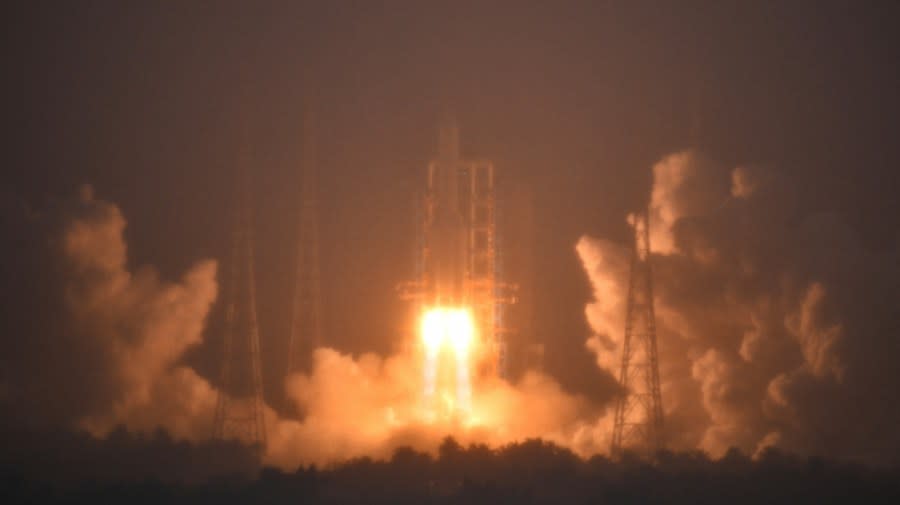China lands a spacecraft on the far side of the moon

A Chinese spacecraft successfully landed on the far side of the moon this weekend, marking a major achievement for the country and a growing 21st-century space race with the U.S.
The Chang’e-6 lunar probe — named after the Chinese mythical moon goddess — landed at about 6:30 a.m. Sunday morning Beijing time in the South Pole-Aitken Basin, a large crater. The probe is set to collect rock and soil samples from the surface that could provide valuable insights into how the lesser-explored far side of the moon compares to the near side.
The mission “involves many engineering innovations, high risks and great difficulty,” the China National Space Administration said in a statement. “The payloads carried by the Chang’e-6 lander will work as planned and carry out scientific exploration missions.”
Using a small robotic shovel and drill, the probe will collect about 4 pounds of surface material that will be launched into lunar orbit with a small rocket booster and picked up by an orbiting craft.
No other country has landed a probe on the far side of the moon, and the Chang’e-6 is China’s second. Missions to the far side of the moon are especially difficult because of communication challenges and the deep craters pockmarking it.
The probe launched early last month, with the mission expected to last about another month. Two other spacecraft have reached the moon so far this year, one Japanese and one from U.S. startup Intuitive Machines.
Chang’e-6 is the sixth moon exploration for China, as the country heavily invests in space exploration. The country also operates its own crewed space station in rivalry with the International Space Station, and says it will place astronauts on the moon by 2030.
That mission would make it the second nation to place astronauts on the moon after the U.S. No person has set foot on the moon since 1972, though NASA has plans to go back in 2026 at the earliest.
The American-led Artemis missions are planned to rely on significant support from private space companies and are in partnership with the Canadian, European and Japanese space agencies.
Boeing’s Starliner program, the company’s first step into private spaceflight, has faced repeated delays in attempts to launch its first craft this month.
Copyright 2024 Nexstar Media, Inc. All rights reserved. This material may not be published, broadcast, rewritten, or redistributed.
For the latest news, weather, sports, and streaming video, head to The Hill.

 Yahoo News
Yahoo News 
